Why do birds migrate : 5 Epic Journey of Birds and Remarkable Instinct That Drives Their Annual Migration
Why do birds migrate, As the chill of winter approaches, an incredible natural phenomenon unfolds across the globe. Countless birds preparing for their migratory voyages fill the skies, transforming landscapes into bustling hubs of activity. Within weeks, these temporary waypoints empty as myriad species launch their epic transoceanic and transcontinental journeys. But what propels birds to undertake such herculean migrations twice a year?
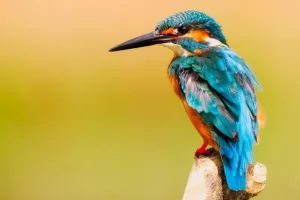
Why do birds migrate : 5 Epic Journey of Birds and Remarkable Instinct That Drives Their Annual Migration
The forces driving these avian odysseys stem from synergistic environmental, behavioral, and physiological factors. Birds migrate to chase resources, find refuge, and reproduce amid seasonal shifts. Honing navigational abilities and strong instincts equips them for long treks full of peril and promise. Understanding migration reveals birds’ profound connection with nature’s cycles and highlights their extraordinary endurance in overcoming daunting obstacles.
The Mysteries of the Spectacle of Bird Migrations
Imagine standing on a shoreline one autumn day as dawn breaks. Suddenly, great flocks crowd the skies as distant honking signals the arrival of skeins of Canada geese. Shorebirds descend onto the beach for brief respite before their nonstop overseas journey south. Passerines flit through trees provisioning before riding gusts of wind toward their destinations.
Why do birds migrate, Within mere days the energetic bustle transforms to eerie silence as all migrants depart to overwinter elsewhere. These mass movements of birds retreating from advancing cold reoccur yearly, propelled by inborn drive and environmental cues. This phenomenon captivated humans across cultures, featuring in art, lore, and science worldwide. But elegant as their flight appears, the forces spurring migration entail colossal struggle.
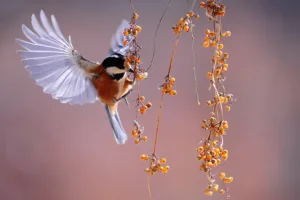
1. Why do birds migrate : The Innate Instinct Driving Migratory Birds
What compels a tiny warbler to embark alone on a 5,000 mile journey? Or leads a bar-tailed godwit to fly nonstop for a week? The influence underlying migrations is an innate instinct inherited genetically over eons.
Like urges for food, water, and reproduction, the impulse to migrate persists in particular lineages, evolved through natural selection. Birds bred with stronger migration tendencies survived and reproduced more successfully. So the orientation and timing continues encoded within genomes.
Why do birds migrate, This inherited instinct manifests in hatchlings establishing seasonal ranges and departure directions absent learning. Even hand-raised birds navigate with precision. So migration remains engrained within the avian blueprint as an adaptive strategy to find seasonal resources.
2. Why do birds migrate : Environmental Triggers Spurring Mass Movement
While migration results from inborn urges, environmental factors fine-tune departure timing and guide routes for success. Two primary cues set travel schedules: changes in day length and shifts in weather.
As winter nears, decreasing daylight triggers hormonal changes including fat storage to fuel migrations. Temperature drops and food supply reductions provide additional prods for birds to vacate cooling climates and seek warmer, plentiful grounds.
Why do birds migrate, So multiple signals converge, indicating declining conditions and the need to migrate before hazards arise. Their innate programming translates environmental signs into directional impulse.
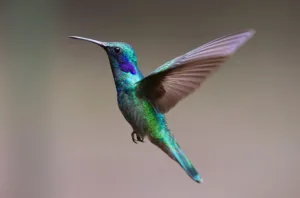
3. Why do birds migrate : Seeking Favorable Habitats and Resources
At the heart of migration is the search for ideal circumstances enabling survival and reproduction. Birds primarily migrate to locate:
- Abundant, high-fat foods to nourish migration and winter survival.
- Favorable nesting grounds with plentiful resources to raise young.
- Refuge from harsh weather extremes in wintering and summer grounds.
- Reduced competition for limited resources by dispersing populations.
Why do birds migrate, Their innate knowledge of seasonal geography leads migrants to traverse vast distances between temporary breeding and wintering homes in pursuit of these optimal habitats.
4. Why do birds migrate : Remarkable Adaptations that Enable Long Journeys
To endure their strenuous odysseys, migratory birds have evolved astonishing anatomical and behavioral adaptations:
- Airportly shaped bodies, lightweight skeletons, and powerful muscles optimize aerodynamics and energy efficiency over long distances.
- High metabolisms and enlarged digestive and excretory organs process energy rapidly for refueling in transit.
- Dense, heat-trapping feathers provide insulation.
- Internal compasses and mental maps guide navigation across continents and oceans.
- Soaring and gliding skills allow lengthy flight with minimal flapping.
- Highly attuned sensory systems stay vigilant for cues signaling stopover sites.
Why do birds migrate, Together these specializations enable migrants like Arctic terns to complete 25,000 mile annual trips. The transformation of body, mind, and skills equips them for extreme journeys.
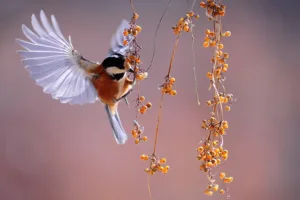
5. Why do birds migrate : Diversity of Migration Strategies and Routes
While all migrate between seasonal ranges, bird species fall along a spectrum in their migration patterns:
- Short-distance migration involves relatively short shifts of a few hundred miles between contiguous ranges to avoid local winter extremes. Species like American robins fall into this category.
- Medium-distance migration spans longer latitudinal distances of up to a few thousand miles between separated ranges. Birds like white pelicans migrate these distances.
- Long-distance migration encompasses huge continental journeys of thousands of miles between vastly distant ranges. Shorebirds like red knots exemplify extreme long-distance migrants.
- Altitudinal migration follows elevational gradients up and down mountains. Species like hummingbirds migrate to higher tropical elevations during hotter months.
Why do birds migrate, So migration patterns vary greatly depending on regional resources, physical adaptations, and environmental niches birds occupy.
Major Global Flyways Carrying Birds Immense Distances
Across the Americas alone, over 3 billion birds representatives hundreds of species funnel along four primary migratory flyways each year. These aerial routes concentrate migratory traffic between critical breeding and wintering grounds.
In North America the Atlantic, Mississippi, Central and Pacific flyways trace diagonal paths spanning the continent and providing feeding and resting stops along the way. Waterfowl tend to follow coastlines and frontiers. Songbirds navigate more scattered overland routes converging on southern destinations.
Similar huge migratory thoroughfares exist across Europe, Asia, Africa, and Australia traversed by myriad birds. Mapping flyways reveals the order underlying migration’s drama.
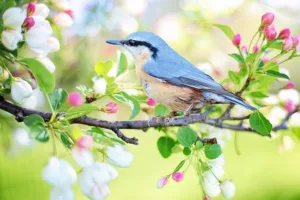
Critical Stopover Sites to Rest and Refuel
Long journeys require well-timed layovers to rest and refuel. Migrants depend on networks of stopover habitats providing food supplies that enable nonstop flights of 80 hours for small songbirds or 36 hours for shorebirds.
Coastlines, marshes, woodlands and rainforests enable migrating birds to rest and feed. Loss of these habitats through human activity presents a grave threat. Some declines in migratory birds directly result from disappearance of stopover sites.
Why do birds migrate, So while migration follows engrained pathways, preserving sufficient waypoints remains key to safe passage. Partnerships across countries aim to identify and conserve critical shoreline, mountainside and riparian stopovers worldwide.
Threats From Human Activities and Climate Change
Beyond habitat loss, migrating birds face mounting dangers from human-linked threats:
- Communications towers and light pollution disorient nighttime navigators.
- Buildings pose collision risks, particularly lighted high-rises.
- Open oil pits and contaminated waters sicken or kill resting birds.
- Pesticides reduce insect food sources and poison birds.
- Climate change de-synchronizes migration timing with peak food availability.
- Outdoor cats near stopovers take heavy tolls on migrants.
- Wind turbines kill birds traveling along migratory frontiers.
Why do birds migrate, So enroute challenges now test migrants’ endurance on top of their arduous journeys. Conservation requires addressing these compounding hazards.

Additional Details on the Science and Diversity of Bird Migrations
While the major factors and overview of bird migration have been covered, looking closer reveals some intriguing complexities within the phenomenon.
Solving Mysteries Through Bird Banding Science
Developed over centuries, bird banding provides insights into migration routes, timing, life spans, and population sizes. Attaching small uniquely numbered tags to birds allows scientists to identify distances travelled and return patterns when recaptured.
Why do birds migrate, Banding reveals birds’ site fidelity, with many returning to depart from the exact same locations year after year. Data also elucidates threats like low early survival. So banding helps science monitor and quantify migration’s unmatched drama.
The Risks and Rigors of Long Sea Crossings
Why do birds migrate, For most songbirds, the most perilous part of migration is traversing long sea crossings like the Gulf of Mexico or Mediterranean Sea. Harsh conditions claim many migrants each year.
Small birds minimize energy expenditure by gliding on air currents or drafts behind waves whenever possible until reaching landfall. Some wait for ideal tailwinds before braving crossings. Radar shows billions massing before ocean transits.
Why do birds migrate, So sea crossings require strategy and providence to succeed. Those emerging on distant shores complete the riskiest leg before island hopping onwards.

How Young Migrants Learn Routes and Locations
Innate orientation guides first migrations, but experience also plays a role, especially in juveniles. Young birds travel with parents when possible to learn optimal routes, distances, stopover locations, and destination habits.
Why do birds migrate, This cultural transmission improves navigation and timing while reducing unnecessary risks. It continues as juveniles eventually migrate solo. So migratory knowledge progresses and adapts across generations.
Adaptations for Extreme High Altitude Migration
A few remarkable species migrate through elevations up to 30,000 feet, posing unique challenges from thin air, cold, and cosmic radiation. Adaptations enabling hypobaric tolerance include:
- Reinforced ribcages resist collapsing under reduced air pressure.
- Increased hemoglobin transports adequate oxygen efficiently.
- Tightened capillaries limit blood oxygen saturation changes.
- High metabolisms offset cold temperatures and energy burn.
Why do birds migrate, So tremendous physiological modifications allow specialized birds to complete unfathomable migrations through the highest skies.

Navigating at Night Using Celestial and Geomagnetic Cues
Many migratory birds travel at night to take advantage of calmer air, cooler temperatures, and reduced daytime predation. But nocturnal navigation poses unique challenges without sun or landmark reference.
To guide after dark, night migrants utilize star formations around the north star, the milky way galaxy, and patterns of polarized light near the moon. Magnetite deposits in their brains also detect Earth’s magnetic fields for orientation.
Why do birds migrate, So celestial and geomagnetic compasses keep nocturnal navigators on track through the blackness.
Record-Holding Migratory Birds
Among extreme avian migrants, the arctic tern claims the crown for the longest overall migration at 44,000 miles roundtrip between Arctic and Antarctic ranges. The satellite-tagged bar-tailed godwit set records for longest nonstop flight at 7,500 miles over 9 days.
Why do birds migrate, Tiny ruby-throated hummingbirds amazingly fly nonstop 600 miles across the Gulf of Mexico. The tenacity required for such feats spurs awe.
Threats to Coastal Stopover Habitats
Why do birds migrate, Many imperiled migratory shorebirds rely on sensitive coastal zones that are among the most threatened ecosystems worldwide. Coastal development, pollution, resource extraction, and disturbance pressure these critical refueling grounds.
Conservation partnerships help identify and sustain mudflats, marshes, tidal zones, and kelp beds relied upon by migratory plovers, godwits, knots, and sandpipers. Protecting beach nurseries enables their miracles.
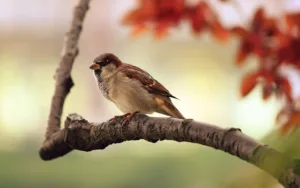
Citizen Science Expanding Migratory Bird Knowledge
Tracking birds across hemispheres requires help from citizens worldwide. Ongoing community science projects allow the public to report sightings, identify species, and monitor populations to enhance data on status and threats.
Online databases like eBird let users upload migratory observations globally. Expanding community involvement advances avian understanding while building appreciation.
Why do birds migrate, So migration remains shrouded in mysteries still being illuminated. But each new insight further discloses the transcendent ingenuity underlying the amazing transcontinental journeys woven into birds’ biology. As spring returns, may we greet our feathery voyagers with renewed commitment to sustain the flyways carrying their unfathomable odysseys.

Watch the video : Migration of birds
Conclusion : Preserving Amazing Migratory Abilities
To sustain migratory miracles, habitat protections must expand from individual sites to networks. Researchers propose wildlife corridors to connect isolated parks and reserves. International cooperation is vital to coordinate preservation efforts across hemispheres.
Every generation of birds perseveres through instinct, learned navigation, and physiological adaptations honed over eons. By supporting their extraordinary efforts through thoughtful human stewardship, we can ensure migratory wonders continue captivating future generations.
So take a moment this year to pause and marvel as migratory creatures traverse the distant skies overhead, fulfilling epic journeys to sustain their cycles of life across the turning globe. Their perseverance reflects the deeper resilience possible within all species, when we honor the wisdom of eternal instincts.
Frequently Asked Questions About Bird Migration
How do birds know when and where to migrate each year?
Migratory ability is innate but triggered by environmental cues like shifting daylight and temperature signalling seasonal changes. Birds discern navigation direction through mental mapping, celestial cues, and geomagnetic fields.
Why don’t all birds migrate?
Some species thrive year-round in moderately warm climates with ample food. But most temperate-zone and Arctic birds must migrate to avoid starvation and freezing when winter reduces resources.
How high and fast do birds fly when migrating?
Most songbirds migrate below 3,000 feet altitude at speeds around 20-40 mph. But some reach great heights and speeds – bar-headed geese hit 29,000 feet and 95 mph! Medium shapes and streamlining help.
Do bigger birds tend to migrate longer distances?
Sometimes, but not always. Tiny hummingbirds brave 620-mile nonstop journeys across the Gulf of Mexico. Bigger birds like geese do make very long migrations, but body size alone does not determine distance capabilities.
How do birds know where to stop and rest during migration?
Migrants use landmarks like coasts and mountains, as well as sensory cues like changing smell and temperature gradients to identify stopover locations rich with food and shelter. These waypoints restore energy.
In summary, diverse migratory birds undertake remarkable seasonal journeys driven by innate instincts and environmental triggers. Their ingenious adaptations enable navigation across vast distances in pursuit of favorable habitats and resources. Preserving stopovers and protecting migratory flyways help sustain these epic natural wonders.
Must Read : Why leaves change their color
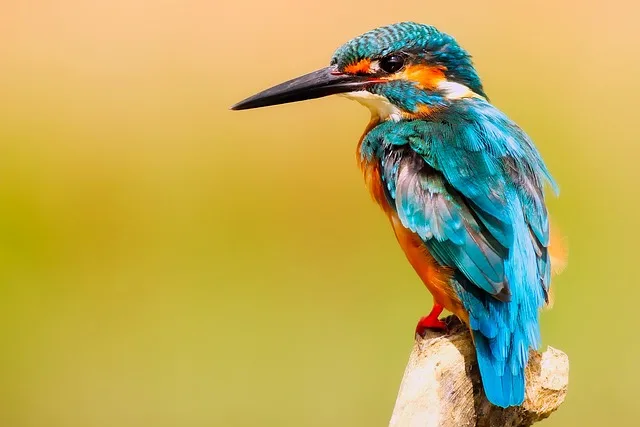













1 comment